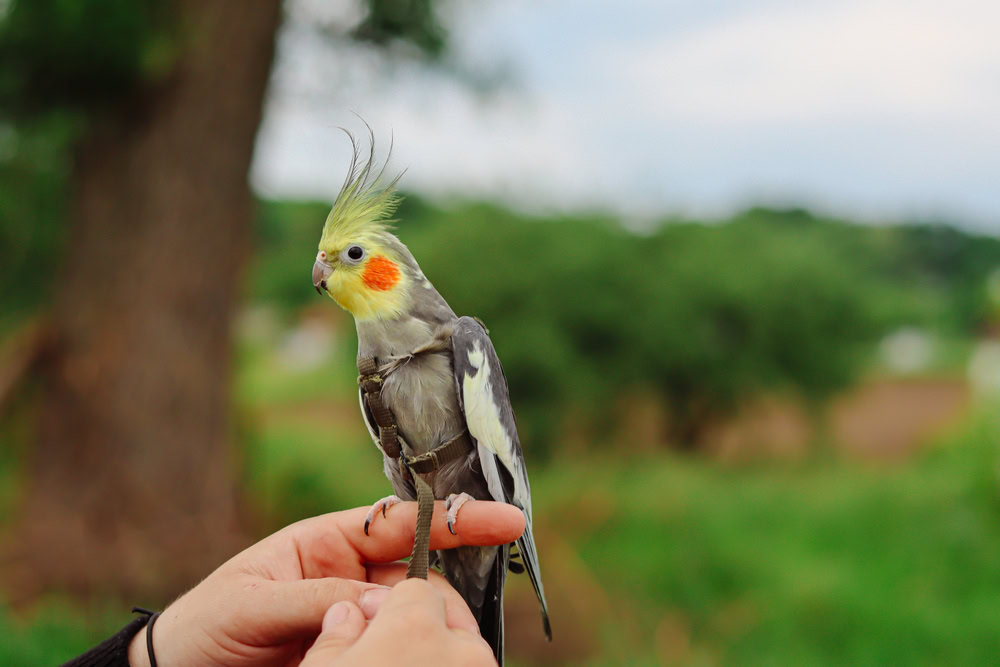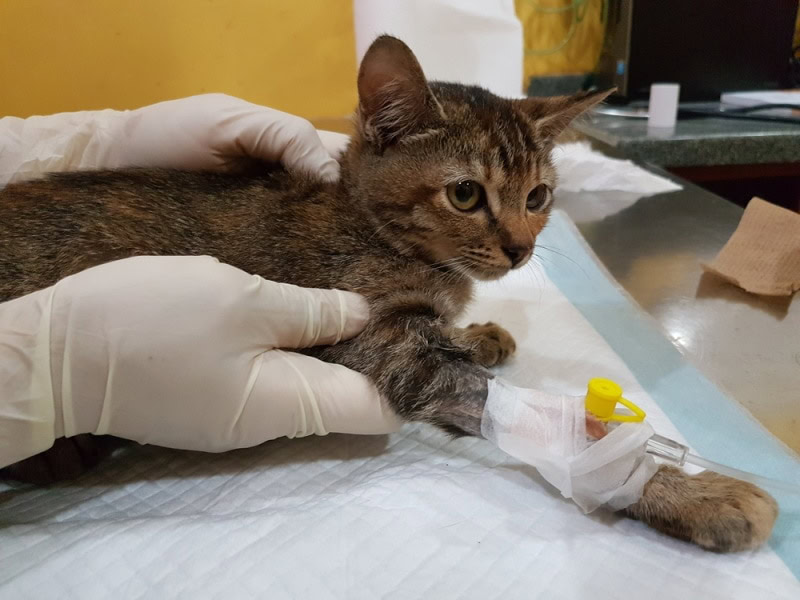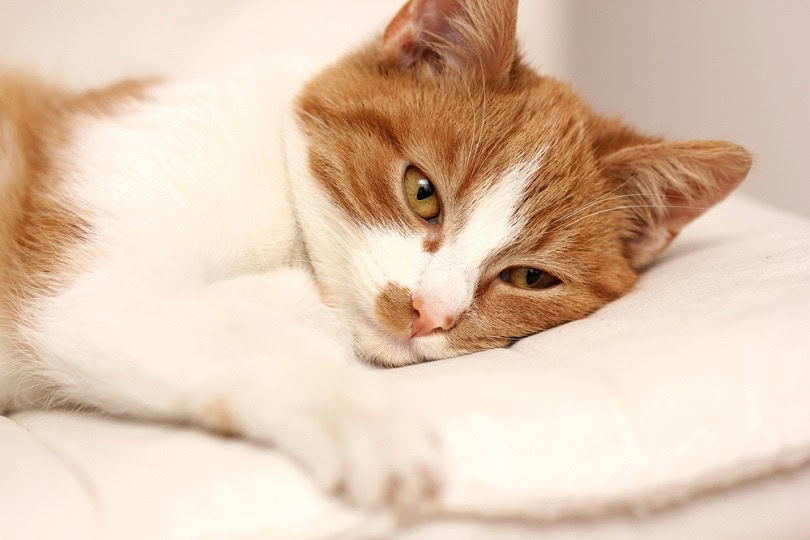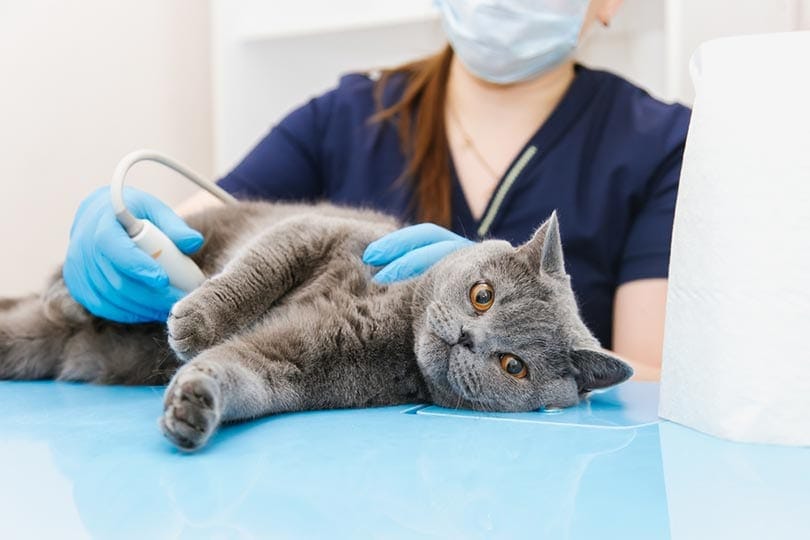VET APPROVED

The information is current and up-to-date in accordance with the latest veterinarian research.
Learn more »Click to Skip Ahead
Cockatiels make lovely pets and are the smallest species of cockatoo. Native to Australia, Nymphicus hollandicus are popular pets due to their small size, social behavior, and trainability, as well as their readiness to breed in captivity. When it comes to having a cockatiel as a pet, the first thing to know is that, like all pet bird species, they are tame, not domesticated. This is an important distinction because it tells us a lot about their behavior and instincts.
Domesticated animals, like cats or dogs, have undergone a process of physiological change as a result of selective breeding which has affected their temperament, digestion, and instinctive behavior.
A tame pet like the cockatiel is essentially born ready to exist in a wild environment, so their instinct to fly away and avoid human contact must be overcome for them to be happy and content pets. Part of that process is allowing your parrot to fly while preventing it from escaping, which can prove quite difficult!
Sadly, many pet birds spend their lives in cages which prevent them from stretching their wings and taking to the air, depriving them of the exercise and stimulation they need. Fortunately, it is possible to train a cockatiel to spend time outside a cage without flying away. However, some owners are wary of allowing their pets to take to the air, which is why avian harnesses have become a popular parrot accessory.
But are they ethical? Are bird harnesses cruel, or should they be used to keep pets safe? Let’s take a closer look.

Purpose and Use of a Cockatiel Harness
The purpose of a cockatiel harness might seem pretty straightforward, but it should not be seen as the equivalent of a cat or dog harness or leash. For a cat or dog, this form of restraint is designed to be worn out on walks and does not interfere with their natural movements in any significant way.
Birds are designed for flight, with their hollow bones, internal air sacs, and aerodynamic feather arrangements. Their powerful breast muscles are strong enough to get them airborne, but not so big as to impede their flight. While a tiny, lightweight harness might seem insignificant to us, even an additional 10 grams can make a huge difference to a bird that only weighs 100 grams.
Additionally, the positioning of a harness may affect the movement of the wings, potentially even causing pain.
For these reasons, a harness should only be used as a backup method of security when taking your cockatiel outside, and should not be used when allowing them to fly.
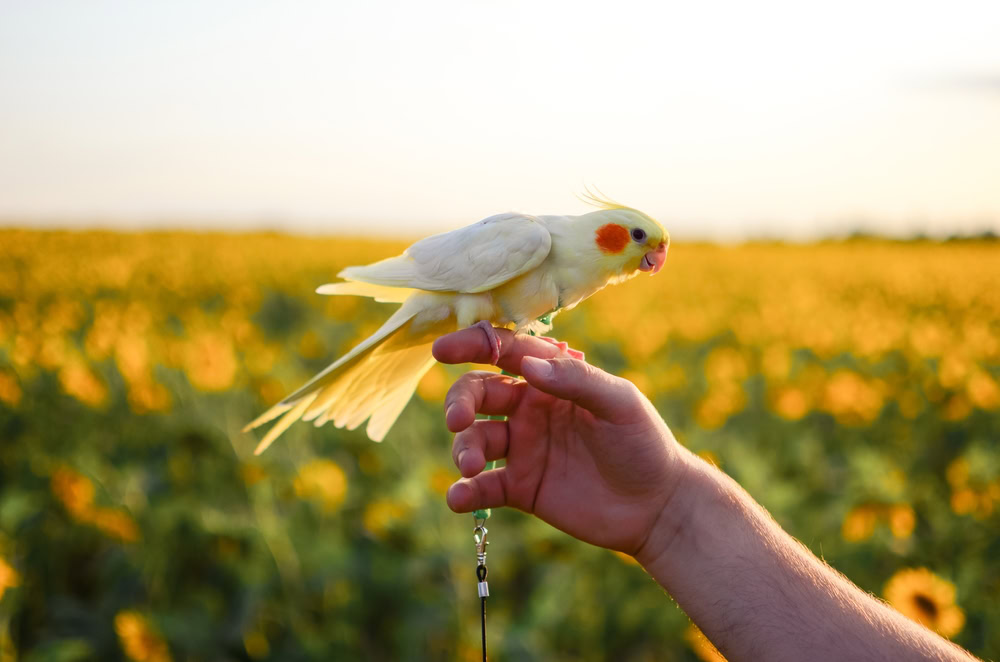
Do Cockatiels Like Harnesses?
If introduced to and trained with the harness from an early age, a cockatiel will likely not be afraid of it. That is not to say that they will like the harness, but it is less likely to stress them out or cause any fear. However, birds that are not introduced to their harnesses properly will likely be frightened and stressed by the harness.
The only way to get your bird accustomed to its harness is through training. This works best for young birds that will be in your care for their entire lives. Introducing older cockatiels to a harness may be more difficult, but the training may go smoothly.
If you force the harness on the cockatiel, the bird will likely associate the harness with pain, fear, and discomfort.
What Are the Risks Associated With Cockatiel Harnesses?
Injuries and Tangles
The most obvious risks associated with cockatiel harnesses are injuries and tangles. Whenever your bird takes off, it may try to fly into bushes or trees. The branches from these plants can cause the harness to get wrapped and tangled up. As a result, the bird may get injured, or you may have difficulty retrieving it.
Additionally, injuries can happen if you are not gentle when putting the harness on the bird. Injuries are most likely to happen if it’s scared of the harness and you force it on your pet. It is much less likely that the bird will be injured if it is calm around the harness.
Accidentally Letting Go of the Harness
One thing that happens more often than you might think is accidentally letting go of the harness whenever the bird is flying. This is incredibly dangerous because pet cockatiels will lack the skills to survive in the wild. They are also more likely to end up tangled by the harness and lead, putting them at risk of injury, predation, and death.
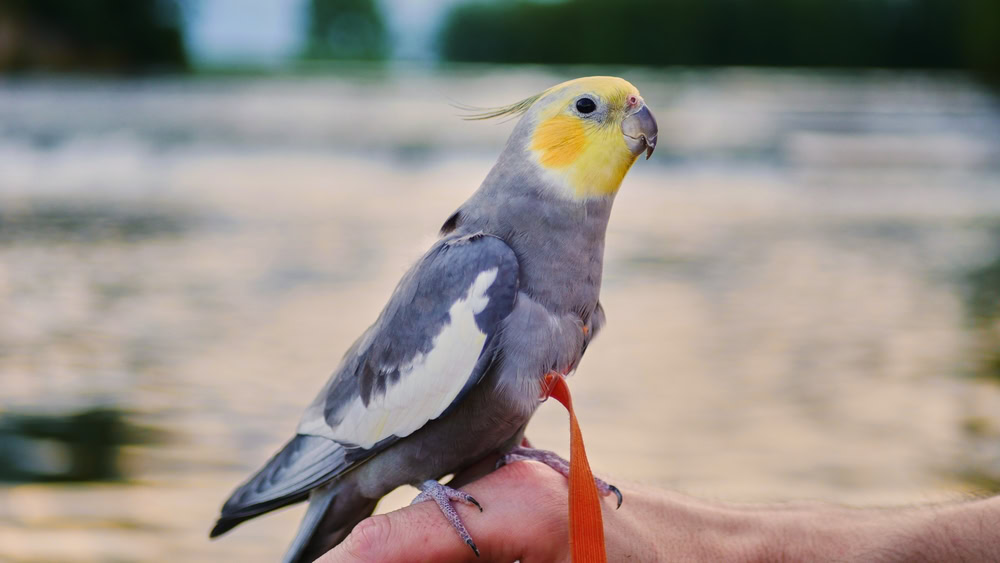
Inhibiting Normal Flight
If you are looking for a safe way to exercise your cockatiel, the reality is that encouraging them to fly with a harness is going to interfere with their ability to fly normally, and could result in long-term injury or damage. These little parrots fly fast and high, and a harness and leash will prevent that as they inevitably reach the end of their leash with a jolt.
Are Cockatiel Harnesses Ethical?
They can be, but it all depends on how they are used.
Keeping birds in cages without allowing them to fly is one of the most unethical things a bird owner can do, and if using a harness helps bridge the gap to allowing free flight, there is an argument to be made that this is more ethical than not allowing free flight at all.
However, there are lots of safe steps and options that can allow you to let your bird fly without risking their escape, which should be explored before resorting to only letting your cockatiel fly when wearing a harness.
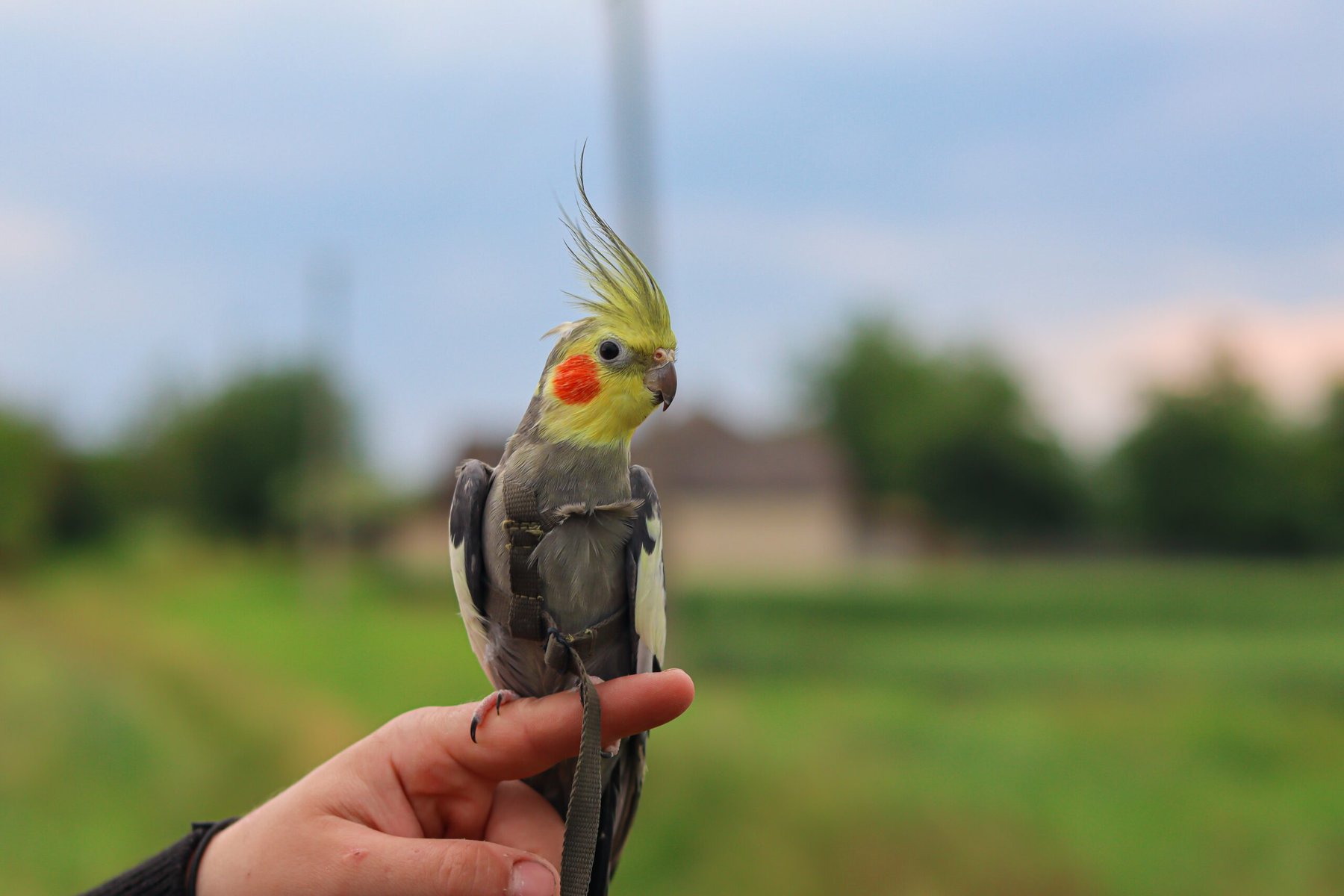
Ethical Uses of a Cockatiel Harness
While we don’t recommend the use of harnesses for flying birds, they can be useful as a safety net when introducing your pet to the outside world.
If you want to let your bird fly freely, you need to take several training steps before you just let them fly, and a harness shouldn’t be seen as a shortcut. Once you have trained your pet to return to you when in an enclosed environment and are confident that they will come back, it’s a good idea to take them outside so they can get a ‘taste’ of their environment and a good look at what the outside of their home looks like. This can be done from the security of a small cage, or you may wish to use a harness to take them for a tour.
Not all birds will accept a harness, even with gradual training, but it is essential to take a slow and steady approach to harness training your cockatiel.
Training Your Cockatiel
One of the most important steps when using a harness is to train with it. Begin by introducing your cockatiel to the harness by simply letting your pet observe it. We don’t recommend leaving it in the cage because the bird may try to pick at it.
As the cockatiel gets accustomed to the harness, you can touch it to the bird. If it does not show any signs of fear, you can try to place the device on it. Do not try to put the harness on the cockatiel unless it completely trusts you and lets you touch it everywhere.
Once you are confident they will accept the harness, ensure you fit it correctly before letting go of your pet. If they get away from you with it loose or attached incorrectly, this could result in injury.
You may still wish to start outdoor visits with your pet inside a cage until you are confident that they feel comfortable and are not likely to flee. Birds are often more sensitive to sounds and objects that we don’t even notice, so it’s important to get an idea of how they are going to react.
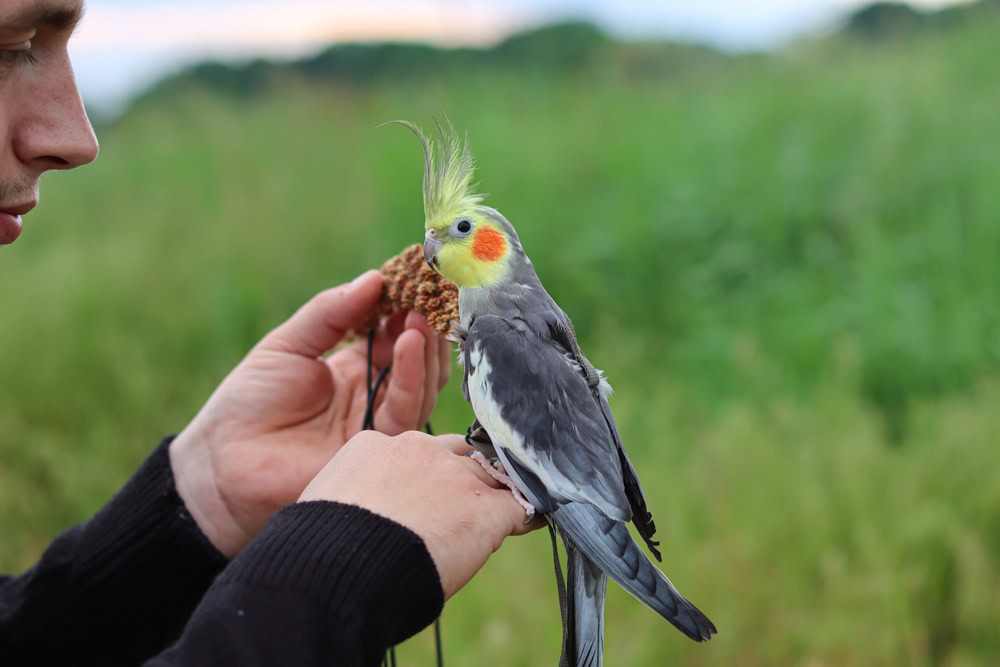
Tips for Safety
Whenever you first bring your cockatiel outside in the harness, we recommend keeping a short leash. This will give you more control over the bird, leading to fewer risks. Do not text, be on the phone, or do anything else that can be a distraction as it can be far too easy to. accidentally let go of the harness.
For best results, you might want to consider attaching the harness to your body. For example, you can use some sort of a connector so the device is attached to a belt loop or your wrist. This will ensure that the bird can’t get away, even if you do get distracted for a moment.
Are There Alternatives to Cockatiel Harnesses?
Many reasons make it dangerous to allow your cockatiel to fly free, such as local predators, tall buildings, and even pollution. Additionally, if you have an older bird or one that you are not confident will return, letting them out may be too great a risk. Fortunately, there are ways to keep your pet safe while still allowing them to feel the wind beneath their wings.
- Carry cage – if you want a safe way to transport your pet or to introduce them to the outdoors, a bird cage is perfect for this. You can even use a small cage for transport – they’re not much good for anything else!
- Indoor flying – you can allow your cockatiel to fly in your home, but be sure to do some bird-proofing first. This may include closing off certain rooms, ensuring ceiling fans are turned off, and making sure they can’t get stuck behind cupboards or refrigerators.
- Hire a hall or aviary – if you do a bit of research, you may find someone in your area who will allow you to hire an empty aviary or hall to let your cockatiel fly in open, but contained, areas.
- Stairs – use treats to encourage your bird to fly up and down the staircase (if you have one). It allows them to get some better height if you don’t have very tall ceilings.
- Safety in numbers – most parrots, including cockatiels, are social birds, and will actively seek company of the same species. If you have more than one cockatiel, a great way to encourage them to return home when you are still in the training period is to keep at least one bird back, as this will encourage the other(s) to return to them.
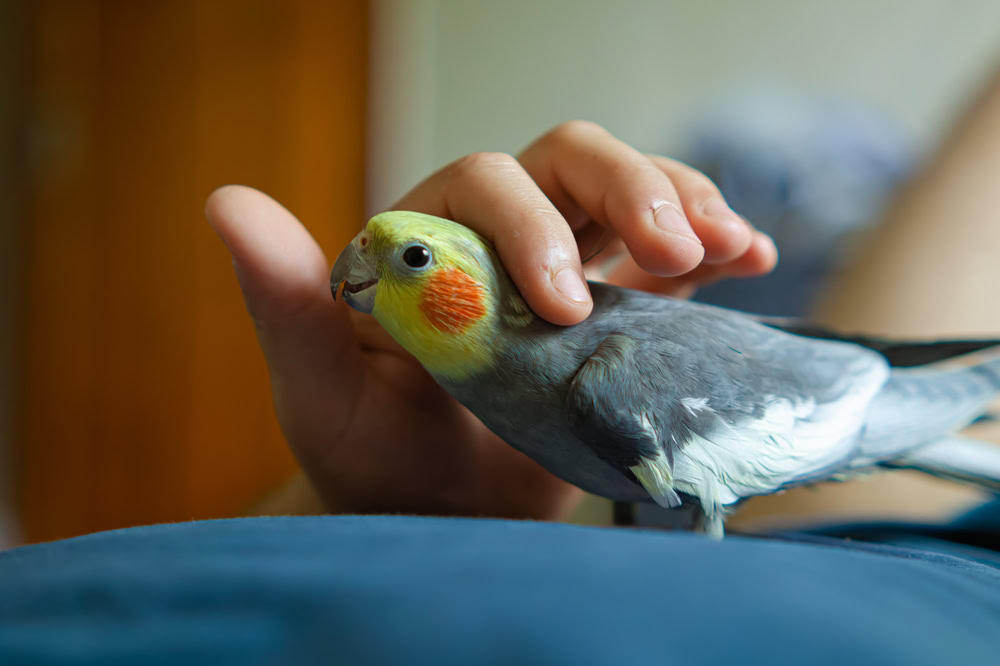
If you’re new to the wonderful world of cockatiels, you’ll need a great resource to help your birds thrive. We highly recommend taking a closer look at The Ultimate Guide to Cockatiels, available on Amazon.
This excellent book covers everything from the history, color variations, and anatomy of cockatiels to expert housing, feeding, breeding, and health care tips.
 Conclusion
Conclusion
While cockatiels can make wonderful and affectionate pets, we cannot forget that they need to fly, and that means we need to find ways to allow them to do this safely. Training your parrot to fly free and return to you is something that should be done under controlled conditions to begin with, gradually increasing their range as you become more confident that they will return. The availability of bird harnesses might seem like they are a great option to allow your bird to fly safely, but the reality is that they are more likely to cause your pet stress and injury than happiness or freedom.
Cockatiel harnesses can allow you to introduce your cockatiel to the outside world in a controlled manner. However, because of the potential for injury and flight interference, we do not recommend their use when allowing your bird to fly; they should only be used as a safety measure.
You should always take the time to introduce your cockatiel to a harness, and never force them to wear it. If you want to allow your cockatiel to fly outdoors, there are many steps involved in teaching them to return to a perch or cage, and a harness is not an easy way to bypass this process.
If your bird shows any signs of stress, we recommend not using the harness at all.
Also see:
- How Long Do Cockatiels Live? Average Lifespan, Data & Care
- Your Cockatiel Is Sneezing: Reasons Why & What to Do
Featured Image Credit: Daria_vg, Shutterstock
